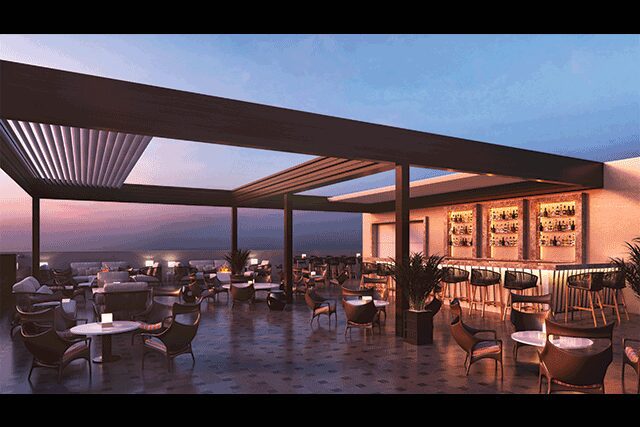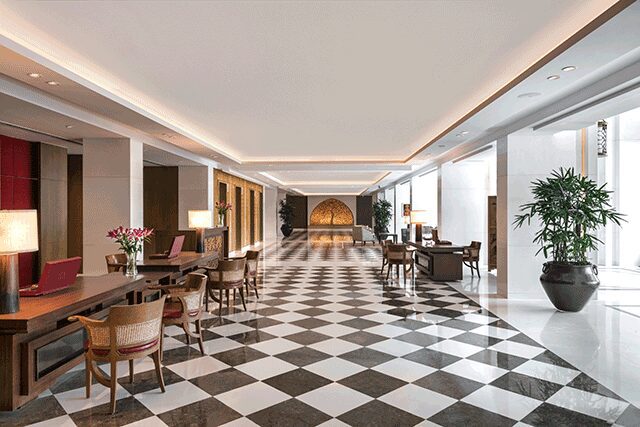The Oberoi, New Delhi, the flagship property for the Indian luxury brand Oberoi Hotels & Resorts, has been significantly molded by its storied past. That’s why when Adam D. Tihany was tasked with the property’s $100 million restoration—which shut the iconic property down for more than 20 months, the first in its history—he didn’t “alter the building, but redirected the guest experience in a way that would best celebrate the existing space.”
For example, guests now arrive through a grand, double-height, marble-clad passageway with windows facing the garden. “The initial perspective is shifted, but there is a strong sense of familiarity and identity that solidifies the timelessness of [the hotel],” says the founder and principal of New York-based Tihany Design. Additionally, a new gate designed by local artist group Kaaru—as an ode to the disparate interpretations of time—provides a visual focal point at the entrance.
Prithvi Raj Singh (P.R.S.) Oberoi, the longtime executive chairman at the Oberoi Group, says the overhaul of the property was a monumental and sensitive undertaking. “The Oberoi, New Delhi first opened its doors to guests in September 1965. At that time, the hotel was recognized as one of the best new hotels, not only in India, but also in the region. After 50 years, it was time to bring the hotel back to its original splendor and preserve its heritage for years to come.”
Over the course of six years, Tihany collaborated closely with the hotelier, and much of that time was devoted to “maintaining the hotel’s DNA and contemporizing it,” he says, starting by reducing the number of guestrooms from 283 to 220 to provide larger, more spacious accommodations.
This process led to a handful of other thoughtful transformations, with Tihany simplifying the interior architectural lines to better showcase the craftsmanship behind the hotel’s art collection, as well as combining textiles and materials “to create an impressive New Delhi gallery,” he says. Taking inspiration from English architect Sir Edwin Lutyens’ simple forms and natural motifs, many of the furnishings are made with warm woods like oak and teak, while brighter hues of blue, pink, and red act “as an extension of the city itself, alive with colorful markets and handcrafted goods,” he says.
Tihany is no stranger to making over fabled properties, including the Beverly Hills Hotel, for which he recaptured the glamour and fantasy of Old Hollywood. Like with the Oberoi, New Delhi, he explains, these facelifts are not merely conservation efforts, but ones where he “carefully considers the ethos and history of a place with the next generation of guests in mind. It is a challenge and an art to define how much you can push—what is worth keeping and what elements need to move forward.” Adds Oberoi: “The renovation carries on the memories [of the hotel’s bygone days] with a design that is modern yet does not change the character of the hotel.”
As the Oberoi Group is slated to reveal six new properties by 2022, the ever-changing concept of luxury, a word that is now often “misused,” says Oberoi, also plays a role in this type of design narrative. “Luxury is, above all, about gracious and personal attention [for guests].”
Tihany also believes that care and wellbeing are inherent to luxury. “That will [never] change, but it will continue to evolve. That’s the software,” he says. “The hardware, where I come in, sets the stage for this level of luxury and interaction to exist. Right now, we are experiencing what I like to call the Age of Design across almost every industry. It’s everywhere and at your fingertips, and the more it is demanded and used as a point of judgment, the higher the expectations become.”

The Oberoi, New Delhi’s open-air rooftop bar Cirrus 9 is part of its transformation to attract the next generation of guests





